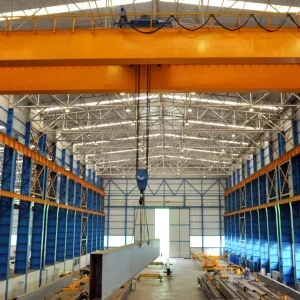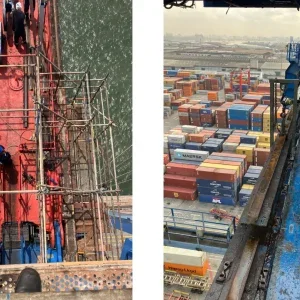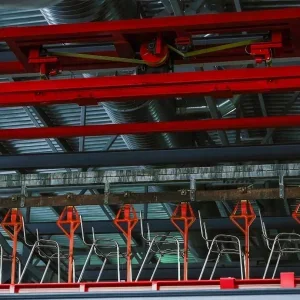It’s a familiar and sad tale for anyone who follows British manufacturing. Bridon, brought together out of a group of rope makers in 1924, some of whom had roots in businesses going back as far as 1789, the start of the British (and, therefore, international) industrial revolution, flourished in the first three quarters of the 20th century, building a world beating reputation in the 1960s and 1970s.
In the mid-1990s, it was acquired by FKI. “They ran it for cash,” Templeman says, “They closed the technical centre, sacked engineers, made little investment. By 2008, FKI was on its knees. Melrose acquired Bridon, and I came in as CEO in September 2009.”
Over the past two years, Templeman has worked to build the company’s manufacturing and research capacities, and to change how it relates to customers.
“Before Bridon, I was CEO of ESAB, a global welding company. That was another company that I joined while it was in trouble, in 2003, and turned around. Rope is much more highly engineered than ESAB’s products.
“We’ve done a major revamp of quality assurance. We’ve bought in a top class auto industry guy to manage that. We’re having a major upgrade of our facilities. We have spent more than £3m on upgrading the largest rope machines in Germany and at Willington Quay. Our new factory in Newcastle is next to a deepwater port. We’ve invested in excess of £20m already, and will invest the same again over the next two years.
“We’ve also changed how we are dealing with customers. We didn’t have contact with customers at a technical or management level, just routine sales. We have significantly improved relationships with some of the major crane manufacturers such as Liebherr and the major Chinese players.”
At sea
Oil and gas, and offshore lifting, is a vital part of Bridon’s business. Templeman says, “In the subsea sector, we supply marine cranes and winch ropes, as well as anchor lines and deepwater mooring ropes. In total, oil and gas accounts for about 30% of our business, and offshore is about two thirds of that.
“The big oil and gas exploration companies need lifting ropes on winches on their boats. At the moment, they are using winch ropes with a rope weight of about 350t. That will soon be going up to 600t, for a lifting capacity of 3,000–4,000t.
“These are complex, multi-strand, ropes. Our new facility in Newcastle will be aimed at that market. Our technical centre will offer rope testing, support, and research and development. We’ll be doing our own R&D, and supporting customers in theirs.”
One key area for R&D in the offshore sector is new rope materials. Templeman says, “Bridon has a fibre rope business. There’s been a trend in rope R&D to look at synthetic and combination ropes. They have advantages in some applications, but significant challenges remain. For some very deepwater moorings, they have strong advantages and are being used. Bridon, and some of our competitors, are developing synthetic and combination ropes for lifting. I expect a breakthrough in offshore lifting in the next five to ten years.”
On land
Bridon’s business isn’t limited to offshore and oil and gas though. Templeman says, “Rope for non-marine cranes is part of our industrial segment. That segment is another 30% of our business, with cranes about three-quarters of that total business. Three years ago, construction cranes were about 15% of our business, now they are about 10%, as the construction market has gone down.
“Industrial crane rope is one of our main priorities for new product development. It had not been given focus until I took over. Dyform, our rope brand, will be getting some product enhancements. That’s an R&D project now, and we’ll be introducing new products over the next year.
“Construction crane products need to be crush resistant, able to withstand bending, and rotation resistant. We have done well with our rotation resistant rope.
“For the wind turbine industry, we have done a lot of work with turbine manufacturers. We’re looking at pretensioning [to help with the problems associated with turbine maintenance], similar to what is used in the deepwater sector. We’re hopefully one or two years from a solution. It’s a good example of how we are working with customers.”






